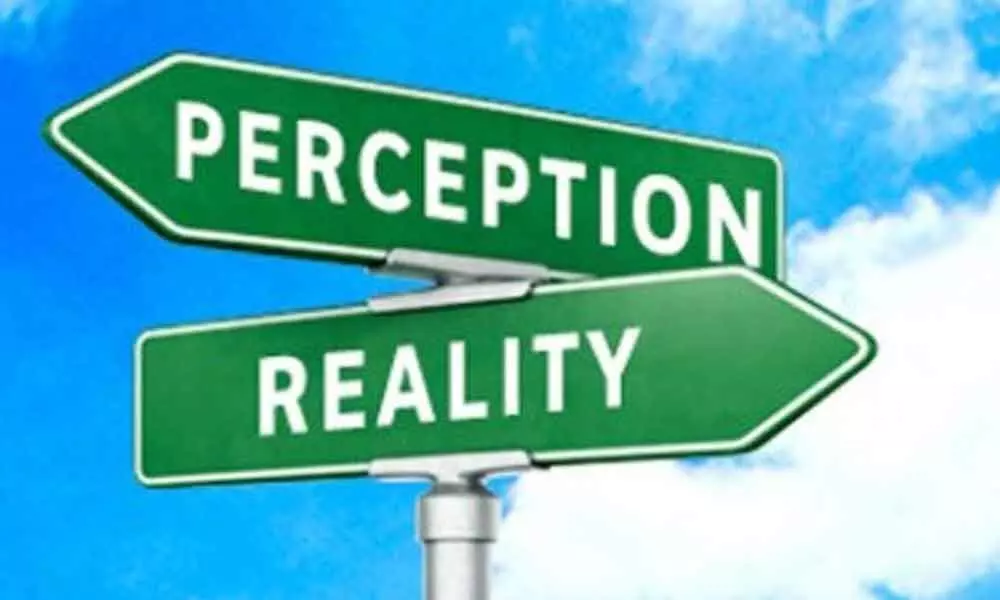Live
- Delhi HC dismisses anticipatory bail plea of ex-IAS trainee officer Puja Khedkar
- Untouched Goa Beaches You Must Visit in January
- Muzigal launches its State-of-the-art Music Academy in Nallagandla, Hyderabad
- Thoughtful Christmas Gifts for Every Loved One
- South Korea: Finance minister silent on martial law probe amid speculation on acting president's role
- Karnataka Minister Laxmi Hebbalkar Vows To Pursue Justice Against CT Ravi
- Stands By Vijayaraghavan Amid Row Over Remarks On Gandhis
- Karnataka Legislative Council Chairman Denies Recording Controversial Exchange
- Lexus India to Redefine Luxury Mobility at Bharat Mobility Global Expo 2025
- Hindustan Zinc Supported Farmers Achieve INR 5 Cr Revenue Through Five Farmer Produce Organizations
Just In

People often get accused of seeing the world the way they want it to be, rather than how it is. This kind of optimism-bias, is supposedly pervasive, and it takes bold truth-tellers and skeptics to show people the light.
People often get accused of seeing the world the way they want it to be, rather than how it is. This kind of optimism-bias is supposedly pervasive, and it takes bold truth-tellers and skeptics to show people the light.
I'm not sure I agree.
It's certainly true that we don't see things exactly as they are. I'm not denying that. Rather, I'm skeptical that optimism is the fundamental bias that most people exhibit.
Far more people, to me, seem irrationally anxious than optimistic. For every person who is blissfully unaware of the impending danger, there's a dozen who are nervous wrecks over all the things which probably won't happen but they can't stop thinking they will.
Evolutionary biology, too, suggests that it would be quite odd for nature to fashion an overly-optimistic creature. If anything, we should be biased towards anxiety and pessimism. A threat unnecessarily-prepared for is much better than a hidden-danger that was gleefully ignored. Instead, I believe the fundamental distortion of our perception is caused by something else.
Learning how to see
One of my favorite books on a drawing is Drawing on the Right Side of the Brain. Despite the somewhat outdated right-brain, left-brain psychologizing, the book has a quite good drawing advice. The basic contention is that the problem most people have withdrawing isn't a problem of moving the pencil, but not knowing how to see.
Our minds, in their incessant categorizing and conceptualizing, don't really look at the world. We see a table, and immediately our brain tells us what a table is like four equally-sized legs, with a flat surface on top. As a result, many people, when drawing a table, make four equally sized legs. Except it doesn't look right because, at most angles, foreshortening will mean that the legs aren't all the same length.
This is also a major obstacle in drawing faces. Our brains make detailed assessments of eyes, mouths, and noses, which convey important information for our social lives. So much so, that we don't notice that they only take up a much smaller part of the head. As such, novice portraitists draw awkward faces where eyes are at the top and mouths near the bottom (eyes are actually in the middle of most people's heads).
To learn to draw, you first must learn to see.
What drawing failures teach about reality
The distortion we have with reality is not that we see things optimistically or pessimistically (although there may be cases where such biases exist). Rather, the problem is that we see reality through our impressive structures of concepts and categorization.
The reason drawing is hard, especially for familiar objects, is that we already have a lot of knowledge about the physical world as a three-dimensional space which interferes with the ability to translate that space into two dimensions.
Reality is incredibly noisy. At any given moment, millions of impulses from your nervous system are coming in simultaneously. To process them, those signals need to be filtered, processes and reorganized into something sensible. Random smatterings of brown on your retina become a dog. A familiar pattern of dots becomes a face.
This process is a good thing. To see reality without those filters isn't to see some deeper truth, but simply chaos. Without any lens of ideas filtering our perception, there's not much useful we can do with it.
The problem is in recognizing that this organization is often constructed for a particular purpose, and for it to be useful for some other purpose, often the same signals and information will need to be reinterpreted differently.
The challenge of learning to draw, therefore, is to take the rather automatic process of ignoring what things really look like and focusing on what things really are (a chair, dog, face, etc.), and refocus your attention back onto the shapes and splotches that impinge on your retina. To see things as two-dimensional, even though your mind is racing ahead to turn them from shapes into things.
Retraining your vision
While this process of conceptualizing and organizing is fantastically useful, occasionally it can get stuck. A pattern of thinking which was useful in one moment, can crystallize into a dogma from which it is impossible to break free.
In these moments, it's often necessary to take a step back. See things for the fuzzy splotches that they are, and start noticing them in a different way. From there, you can start to try seeing them in a different way, a way that is more useful for your current purposes, even if just temporarily.

© 2024 Hyderabad Media House Limited/The Hans India. All rights reserved. Powered by hocalwire.com







